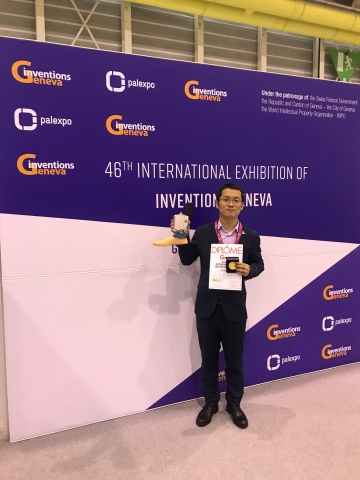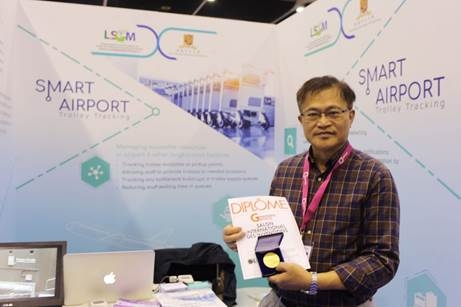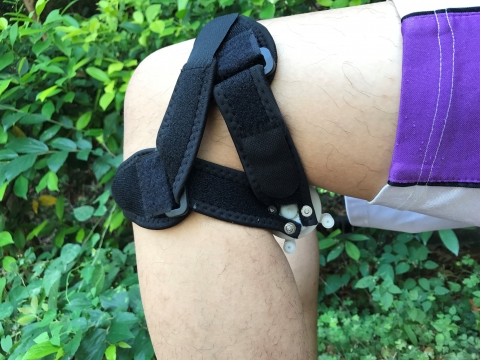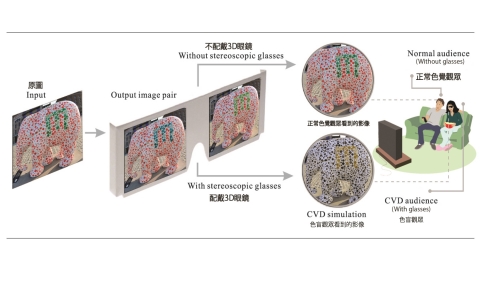Research teams from four projects have been awarded in the 46th International Exhibition of Inventions of Geneva. Here is a summary of CUHK award-winning projects: Gold Medal
Based on the biomechanics of human ankles, a powered ankle-foot prosthesis was developed for reproducing the function of human ankles. Compared with the commercially available passive prostheses, the powered prosthesis can provide net power to the wearer in the manner of a human ankle, as well as real-time monitoring of the prosthesis. As a result, when amputees wear the powered prosthesis, they can regain a gait that is smoother and more natural than with the passive prostheses. Furthermore, the impact on their sound side during the initial stance phase will be decreased, and the human effort in walking can be decreased by 15% or more.
The Hong Kong International Airport (HKIA) served over 72 million of passengers in 2017. Around 13,000 baggage trolleys are distributed throughout HKIA to cope with the enormous passenger flow. Maintaining a steady supply of trolleys has been one of the major concerns of HKIA. The CUHK team has collaborated with HKIA to provide real-time monitoring of trolley availability at various trolley pick-up points through the use of the AI-based video analytics to detect trolleys from visual content of video cameras. Trolley detectors are created through a machine learning training process. The system has reached an accuracy of 92%, enabling frontline staff to make proper and timely allocation of trolleys for passengers.
This project is to develop an easy-to-use medical device for the prevention and treatment of knee joint degeneration diseases. The technologies include low-level laser therapy (LLLT), heat therapy, acupuncture and massage. Stimulations generated by the device could activate inner tissue of the knee joint and help relieve pain, promote blood and lymph circulation, as well as help to boost metabolism and tissue regeneration. The device will be used for clinical rehabilitation in hospital. It can also be applied to people who need to sit for a long time, such as at home, in the office or during long-distance flight.
Approximately 250 million people suffer from colour vision deficiency (CVD). The existing methods that help colourblind people distinguish colour in image/videos are, however, not practical in scenarios where there are both CVD and normal vision audiences sharing the content. Prof. Wong’s team proposes the very first system that allows CVD and normal-vision audiences to share the same visual content simultaneously by making use of the stereoscopic display which offers users two visual experiences (with and without wearing stereoscopic glasses). The invention minimises the trouble colourblind people have faced in the past due to their inability to distinguish colours.
|
|





